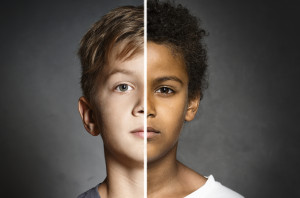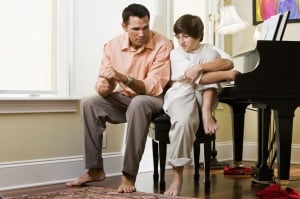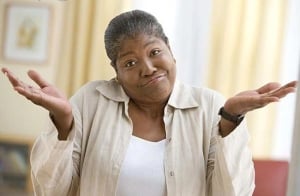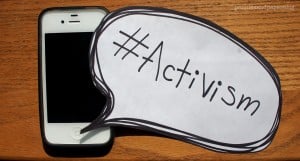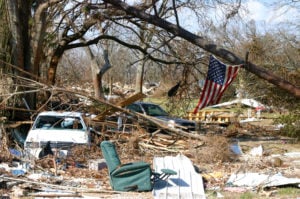
Flooding after a hurricane.
This article was originally published on La Calentura and republished here with the author’s permission.
The numbers and photos coming out of Harvey, now a tropical storm, are surreal. People from all walks of life have been impacted by this catastrophic storm. Some white, some Black. Some old, some tenderly young. But Mother Nature isn’t racist. She doesn’t discriminate — our systems do.
When disaster strikes, not everyone experiences the same impacts.
If you’re a homeowner with wealthy parents who live in the U.S., you’re likely going to be better off. This doesn’t mean you won’t suffer or that this storm won’t be traumatic for you. It just means that you’ll have an easier road to recovery.
Easy, of course, is relative because none of this is easy for anyone going through it. But imagine being a tenant who can barely speak English and lives paycheck to paycheck with no family in the U.S. That’s another level of trauma.
Mother Nature isn’t racist, but our systems most certainly are. And they ignore people of color’s well-being when they place them in certain neighborhoods or geographic locations. Or fail to provide enough of a safety net so that vulnerable communities can push through when shit goes down, as it currently is.
So when natural disasters pour, literally, trillions of gallons of water onto largely Black and Latinx cities surrounded by oil and gas refineries, don’t blame Mother Nature; blame institutions, historic and systemic racism, and the people behind these institutions, systems, and history.
Because they knew this was coming, and they knew who’d suffer the most — they knew.
Here are five points that lay out how and why people of color are disproportionately impacted when struck by such tragedies.
1. Redlining
Segregation never ended, it just took on a new name: redlining.
This real estate practice, dating back to the 1930s after the Great Depression, broke up neighborhoods on maps by their race. The ones outlined in red presented the greater risk to mortgage lenders—they also happened to be made up of non-white people.
This led to not only continued segregation but also disinvestment in communities of color. And it prevented communities of color from building wealth by buying homes because mortgage lenders didn’t want to loan any money to people in those communities.
So these families turned to predatory loans instead. That just created a load of debt for people trying to build a home, particularly for Black people.
This relates back to natural disasters because mortgage lenders weren’t the only ones who used these maps. So did companies looking where to place hazardous sites. The redlined neighborhoods marked “hazardous” eventually became so.
A 1999 study published in the Annals of the New York Academy of Sciences journal stated:
The redlining by banks can result in the disproportionate representation of undesirable land uses, such as deserted factories, warehouses, and landfills in segregated areas. Persons who reside in segregated neighborhoods may also be disproportionately exposed to environmental toxins and poor-quality housing.
This leads us to my next point.
2. Environmental injustice
Refineries, power plants, landfills and anything that spews dangerous toxins into the air or water tend to be placed near environmental justice (EJ) communities. These are communities of color, poor communities, or both. This is a fact and, as stated above, a result of redlining.
A recent study in 2016 from researchers at the University of Michigan and University of Montana confirmed earlier studies: Hazardous waste sites and polluting facilities tend to be in communities of color.
The news release reads:
The researchers found “a consistent pattern over a 30-year period of placing hazardous waste facilities in neighborhoods where poor people and people of color live.”
Racial discrimination in zoning and the housing market, along with siting decisions based on following the path of least resistance, may best explain present-day inequities, they concluded.
Minorities and low-income communities are seen as the path of least resistance because they have fewer resources and political clout to oppose the siting of unwanted facilities.
When a natural disaster strikes these neighborhoods, further pollution can result from it. With Hurricane Matthew in North Carolina, waste from hog farms was affected, impacting the groundwater, as I previously wrote about for Colorlines.
Similar reports of putrid smells are currently coming out of Houston. A nasty smell is one thing, but a dangerous nasty smell is another. And be it hog waste in the water or dangerous gases in the air, neither is healthy for people.
If these facilities are concentrated near poor communities of color, then they are the ones who have to deal with the health consequences.
And who’s gonna foot the doctor bill? Not the government.
3. Flood insurance
With Harvey, in particular, the Associated Press has already reported that “only a small fraction of homeowners in Harvey’s path of destruction have flood insurance.”
Without insurance, the cost of fixing a home or purchasing new furniture lands on the homeowner. They have to pull from their own savings or secure a loan.
Homeowner’s insurance won’t cover water-related costs unless the water came in after the home was damaged by a broken window or damaged roof.
Flooded homeowners may end up paying $28 billion out-of-pocket combined, the AP notes. And not all floodplains require that a homeowner purchase flood insurance, so if it’s optional and pricey, a person may opt out.
As the Insurance Institute for Business & Home Safety puts it, low-income residents simply can’t afford flood insurance even if they know its benefits.
From the book “Race, Place and Environmental Justice After Katrina: Struggles to Reclaim, Rebuild, and Revitalize New Orleans and the Gulf Coast” by Robert Bullard and Beverly Wright, two leading voices on EJ:
African-American households are also less likely to have homeowners’ insurance and rental insurance to cover storm losses and temporary living expenses (Bolin and Bolton 1986).
African Americans are also less likely than whites to have insurance with major companies as a result of decades of insurance redlining (Peacock and Girard 1997).
African Americans are more likely than whites to receive insufficient insurance settlement amounts. How insurance claims are settled can impact the ability of black households and neighborhoods to recover.
Ultimately, this form of discrimination harms wealth creation of individual households and siphons off investments needed to rebuild the black community.
4. Poverty
Ultimately, it comes down to money. Communities of color suffer from higher poverty rates than their White neighbors: Alaska Natives and American Indians suffer the highest poverty rate at 27 percent.
They’re also some of the most affected by climate change due to their subsistence lifestyle, and many have communities along the Gulf Coast, where hurricanes run wild.
Black people in the U.S. suffer the next highest poverty rate: 25.8 percent. White people, on the other hand, see an 11 percent poverty rate.
Without money, families are unable to evacuate in time. They don’t have the money to fly, and they’re less likely to own a car to drive out of town. They also might not be able to properly prepare and buy whatever resources they’ll need to ride out the storm.
I’m talking about water, canned foods, flashlights, batteries. All the random things necessary to survive a disaster in your home without power or the ability to leave.
Then, there is the extreme end of poverty experienced by the homeless. Many homeless people reportedly staked out underneath highways and bridges, but water has since covered these locations.
A 2009 peer-reviewed study published in the journal Applied Geography notes:
Equity issues are of particular importance in risk assessment of floods and other natural and technological disasters.
The socially and economically vulnerable, particularly if they have limited or no social support structure, may bear additional burdens than “mainstream” or more affluent populations when exposed to identical physical phenomena.
These hazards are comprised of stressors (often residing within the system) or perturbations (commonly originating from outside the system or location), as defined by Turner et al (2003).
5. Climate change
Climate change is worse for people of color and the poor.
The Intergovernmental Panel on Climate Change has proved this. So has the United Nations.
This is true when it comes to natural disasters like hurricanes and extreme flooding. It’s also true for heatwaves and droughts. This fact is especially relevant when taking a global perspective.
The Global South will see some of climate change’s worst impacts. While Texas and Louisiana deal with Harvey, South Asia has been dealing with its own flooding. The homes flooding in Nepal are made out of mud; all they have left is each other, and the plastic tarp above their heads in shelters.
So far, at least 30 people have died due to Harvey. In India, flooding has killed nearly 500.
***
Mother Nature isn’t racist, but our government and systems are.
Routinely, the needs and well beings of people of color are disregarded, and entire communities are left to live in neighborhoods or geographic locations that are most at-risk for natural disasters and climate change.
As it stands, our systems repeatedly fail to provide enough support to vulnerable communities so that they can properly weather disasters like Katrina and Harvey.
So, while it’s tempting, don’t blame Mother Nature in times like these. Instead, let’s focus our attention on our problematic institutions, systemic racism, and discriminatory history of this country — they are what got us where we are today.
[do_widget id=’text-101′]
Search our 3000+ articles!
Read our articles about:
Our online racial justice training
Used by hundreds of universities, non-profits, and businesses.
Click to learn more





